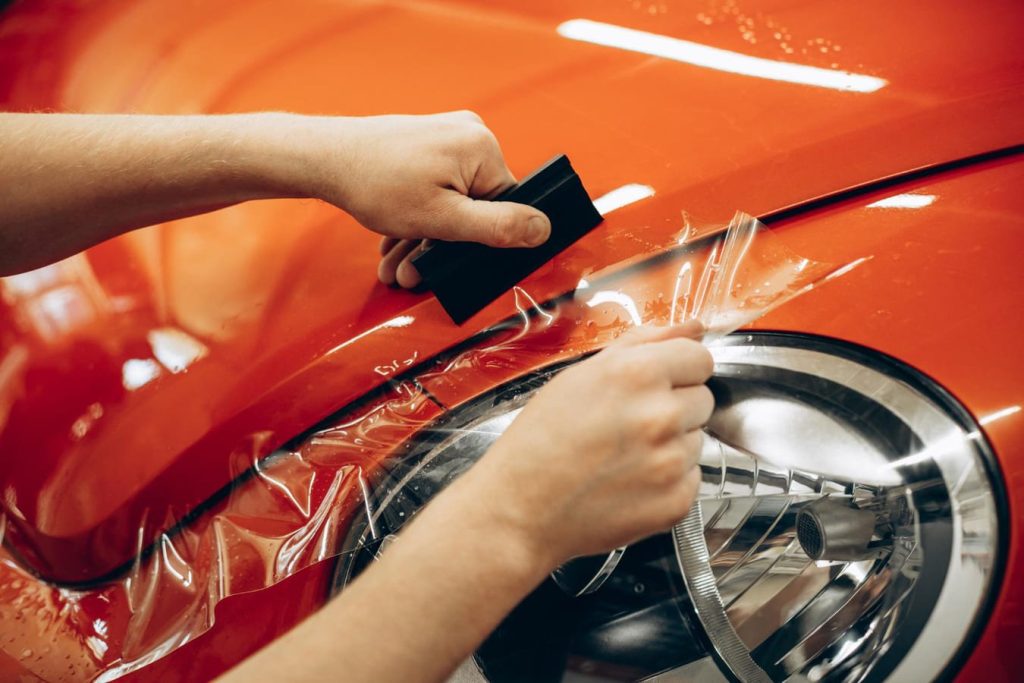Imagine driving your car off the lot, its paint job glistening under the sun, untainted and perfect. Now, wouldn’t you want to keep it that way for as long as possible? Enter Paint Protection Film (PPF), a virtually invisible layer of armor that protects your car from the wear and tear of everyday driving. In this article, we delve into the world of PPF, exploring how this innovative product can keep your vehicle looking showroom-new.
What is Paint Protection Film?
PPF, or Paint Protection Film, is a thin, clear, and durable urethane material applied to the painted surfaces of a vehicle to protect them from chips, scratches, and the elements. Initially developed for military use to protect helicopter blades, PPF has evolved into a must-have for car enthusiasts and everyday drivers alike.
The Benefits of PPF for Your Vehicle
PPF offers a multitude of benefits for vehicle owners:
- Damage Resistance: PPF is designed to absorb the impact from road debris, resisting scratches and dings that can compromise the integrity of your car’s paint or Thousand Oaks Ceramic Tint.
- Self-Healing Properties: Many PPFs come with a self-healing top layer that can repair minor scratches and swirl marks with heat from the sun or an engine.
- Stain Resistance: The film acts as a shield against bird droppings, tree sap, and other corrosive substances that can stain or etch into the paint.
- UV Protection: PPF filters out harmful UV rays, preventing paint from fading and keeping it vibrant for years.
- Enhanced Gloss: Modern PPFs can enhance the gloss and clarity of the paint, giving your vehicle a constant wet look.
The PPF Installation Process
The application of PPF requires precision and expertise. Typically, the process involves the following steps:
- Cleaning: The vehicle’s surface is thoroughly washed and clayed to remove any contaminants.
- Preparation: The PPF is custom cut to fit the specific make and model of the vehicle, ensuring a perfect fit.
- Application: The film is meticulously applied to the vehicle’s surface, using a slip solution to position it and a squeegee to remove bubbles and wrinkles.
- Curing: Once applied, the film needs time to dry and cure, adhering completely to the vehicle’s contours.
Maintaining Your PPF
To ensure the longevity of the PPF, proper maintenance is key:
- Regular Washing: Clean the car regularly with PPF-safe shampoos to prevent dirt build-up.
- Avoid Abrasive Products: Steer clear of abrasive brushes and harsh chemicals that can damage the film.
- Inspection: Regularly check the film for any lifting or damage, particularly along edges.
Choosing the Right PPF Service
Not all PPFs are created equal, and neither are the services offering them. When considering PPF for your vehicle, look for:
- Quality Material: Invest in high-quality PPF that offers the best protection and longevity.
- Professional Installation: A skilled installer can make all the difference in the appearance and durability of the film.
- Warranty: A good PPF service will provide a warranty that covers defects and installation errors.
PPF vs. Other Protective Options
While there are other options like ceramic coatings and wax, PPF stands out for its physical barrier protection. Coatings and wax can offer a level of shine and some protection against the elements, but they fall short in protecting against physical impacts.
In Conclusion
Paint Protection Film is an investment in your vehicle’s aesthetics and value. It’s the guardian that battles everyday road warfare – from gravel to rogue shopping carts – ensuring that your car retains its impeccable appearance. For vehicle owners who take pride in their ride’s appearance, PPF is the ultimate defense against the tests of time and terrain. Whether you’re looking to safeguard a luxury car or simply wish to maintain the resale value of your daily driver, consider PPF a shield worth having.
For more informative articles keep visiting The Post City.
